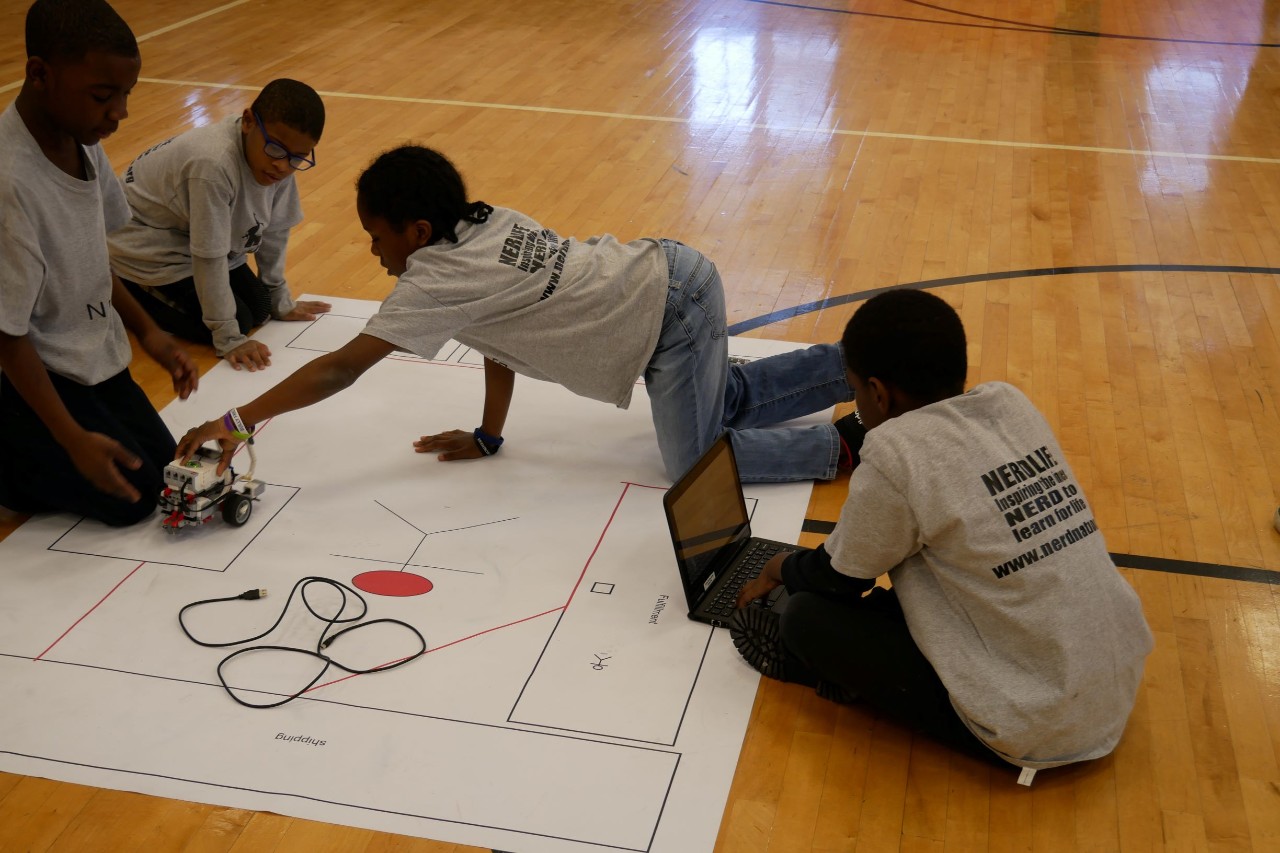
Engineering student streamlines UC robotics competition
New scoring system makes event more enjoyable for all

Matthew Stoker continues to volunteer for the robotics competition.
Matthew Stoker, a second-year chemical engineering student at University of Cincinnati, enjoys solving problems across disciplines. And he’s not afraid to put in more than 100 hours to do it right.
Stoker has worked the past two years to develop a custom digital scoring system for UC’s K-12 robotics competition, hosted by the College of Engineering and Applied Science Office of Inclusive Excellence and Community Engagement.
Two years ago, robotics teams in the competition were waiting for five hours for winners to be announced. Stoker heard about the problem through his Choose Ohio First Scholarship advisor, associate professor emerita Cheryll Dunn, and volunteered to develop a new system to shorten the scoring time.
The UC robotics competition emphasizes the importance of each team’s research and design process in addition to a robot’s performance. Many other robotics competitions use premade scoring sheets and follow a prescribed set of judging criteria. Scoring often focuses on how a robot performs a given task at the event.
The UC judges needed their scoring system to accommodate engineering-centered evaluations, but that prevented them from using any existing score sheets.
The coordinators had been questioning whether they should change their judging criteria so they could use a pre-made scoring system.
“It was hard to find a scoring system — there isn’t one. We couldn’t purchase or replicate one by VEX or Lego League,” said Don Wittrock, program coordinator for the Office of Inclusive Excellence and Community Engagement.
In the past, physical score sheets were submitted to a single person for entry into a massive spreadsheet. It was taking hours to enter, tally and double-check data before any scores could be announced.
Stoker devised a way to auto-calculate scores and to gather data from judges using a simple, user-friendly interface accessible via smartphone, tablet or computer.
“Matthew created a full unique scoring system for the robotics competition,” said Wittrock. “He engineered a way for us to keep our program format and automate our scoring system.”
In 2019, judges filled out custom Google Forms that imported scores directly to Google Sheets. This improved scoring accuracy and cut an hour and a half off calculation time.
The pilot run identified bugs that bogged down calculation times. Stoker fixed them and knew he could optimize the system.
“The program wasn’t as refined as I wanted it to be,” said Stoker. “If I have a set of goals for something, I want to meet them.”
For the 2020 event, Stoker challenged himself to program the Google Sheets to update automatically lag-free and in real time. The hardest part for him was learning the programming language Javascript to create a custom add-on, which houses a multitude of specialized sheets functions as well as a constant refreshing mechanism.
Stoker achieved his goals and more, cutting over four hours off the initial scoring time. With his new revision, scorekeepers can give coordinators accurate live updates at any time on team progress.
The updated system notifies scorekeepers of ties, auto-generates feedback pages for each team at the end of the competition, and even creates awards for winners.
“It’s been a behemoth of a project, but it has been my pride and joy for the last two years,” Stoker added.
Stoker’s robotics journey has come full circle. He first learned programming through his high school’s robotics team. He competed for two years in FIRST tech challenges.
“Programming was something that I was always interested in, but never had all the resources to do it,” Stoker said. “But when I joined the robotics team, I finally had someone who could show me how to get started by teaching me how to install base programs and start experimenting. I was able to teach myself from there.”
Stoker already has a third revision in the works. His next big goal is to be able to display a live feed of scores on a TV scoreboard in the facility during the entire competition.
Featured image at top: Students test a robot in their warehouse floor plan. Photo/Corrie Mayer/CEAS Marketing
Related Stories
Supporters give generously to the Bearcats Pantry and Resource Center
December 22, 2025
Supporters gave generously to the Bearcats Pantry and Resource at the University of Cincinnati during two fundraisers: the Crosstown Foodout and Giving Tuesday.
Challenges for veterans in the workforce
December 22, 2025
A new research review examines how veterans and their families impact the economy.
UC student breaks world record in competitive speedcubing
December 19, 2025
UC computer science student Sujan Feist set a new world record in speedcubing at competition this month in Coshocton, Ohio. Feist is the reigning world champion in the 2x2 division.
